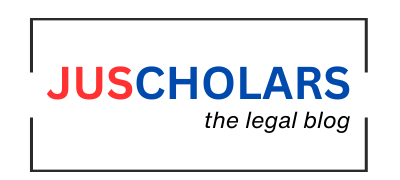Despite the fact that the digital revolution has changed economies, civilizations, and cultures around the world, gender differences in ICT still exist. While ICT presents chances to bridge social and economic gaps, a considerable section of the population—especially women—are unable to benefit from it due to gender-based disparities.
Understanding Inclusivity and Gender Neutrality
The presumption of legislation that is gender-neutral is that all genders will have equal access to opportunities and protections. But it often overlooks structural injustices rooted in cultural standards, differences in access, and financial barriers. Conversely, gender-inclusive policies intentionally account for these differences, ensuring equity rather than just equality. This distinction is the main thrust of the debates on ICT laws and policies around the world. (Ahmed, 2019)
The Digital Divide by Gender
ICT technologies and services are more inaccessible and unhelpful to women in the whole world compared to men. Women are 18 percent less likely to own a mobile phone, and they are even less likely to use the internet as indicated by the World Economic Forum’s Global Gender Gap Report 2023. This gap is made worse, especially in poor countries, by cultural norms, financial limitations, and an unavailability of educational chances.
The second type is the underrepresentation of females in the IT and its related sectors of employment as a result of the gap. For instance, only 25 percent of India’s employment in terms of tech constitutes females; NASSCOM, (2022). These specific issues require reconsideration about the ICT laws for amelioration in view of these disparities.
Development of ICT Laws throughout History
ICT policies at first considered that everyone was on an equal footing and followed a gender-neutral approach. For example, the US Telecommunications Act of 1996 did not consider structural gender inequality while encouraging competition in the telecom sector. Likewise, India’s Information Technology Act of 2000 ignored gender-specific issues such as cyber crimes like online harassment and digital divide and focused on concentrating on cybercrime and e-commerce.
The rise in cybercrimes that targeted women more inappropriately, such as doxxing and cyberstalking, made their inadequacies obvious. To address online harassment, some countries enacted amendments such as India’s Criminal Law (Amendment) Act of 2013. However, these measures have been more reactive than proactive.
Global Initiatives for Gender Inclusion
International organizations have recognized the significance of gender-inclusive ICT policies. The UN’s Sustainable Development Goal 5 includes an emphasis on gender equality and women’s access to technology. Also, the Beijing Declaration of 1995 and the World Summit on the Information Society of 2003 and 2005 emphasized the need for equitable access to digital technologies. ((OECD)
Implementation is, however, unequal despite these efforts. Europe has done great in this regard with laws such as the Digital Services Act (2021), which deals with hate speech and online harassment based on gender. Socioeconomic obstacles and weak legal systems, however, cause many emerging countries to lag behind.
A Comparative Study of ICT Laws in India, the US, and Europe
Europe: When it comes to gender-inclusive ICT policies, the European Union is leading the way. The Digital Services Act holds internet platforms accountable for removing hate speech based on gender, while the Women in Digital Scoreboard monitors gender differences in ICT-related education and employment.
United States: Although the country prioritizes workplace diversity programs, it lacks a comprehensive legal framework that addresses gender-specific issues in ICT.
India: The country has made significant progress in combating online harassment, as evidenced by the Criminal Law Amendment of 2013, but its ICT policies are mostly gender-neutral and fail to address structural obstacles.
Laws Regarding Gender Inequality in ICT
International Instruments
- Convention on the Elimination of All Forms of Discrimination Against Women (CEDAW): This is not an ICT-specific instrument, but Article 14 of the convention stresses the need for technology to empower rural women.
- UN Resolution 70/1: Transforming Our World (2015): This is one of the SDGs and underlines the use of ICT in achieving gender equality.
- European Union
Digital Services Act (2021): Requires platforms to take measures against gender-based online abuse, making digital environments safer.
General Data Protection Regulation: This regulation guards personal data and has ramifications for women’s protection against online exploitation.
- United States
Violence Against Women Act – Reauthorized in 2022: Contains provisions regarding online harassment and cyberstalking.
- India
Information Technology Act, 2000: Sections 66E, 67, and 67A punish online sexual harassment and explicit content.
Criminal Law (Amendment) Act, 2013: Cyberstalking and harassment against the backdrop of gender-specific issues.
Cybercrime and Gender-Based Violence in Digital Spaces
Case Study: Revenge Porn in the United Kingdom
The Criminal Justice and Courts Act 2015 of the UK criminalized the sharing of explicit images without consent. Although this law is neutral in terms of gender, its main beneficiaries are women since they are disproportionately targeted for such crimes.
India Cybercrime Scenario
India has seen a tremendous increase in gender-based ((Supreme Court of India) cybercrimes, such as cyberstalking, doxxing, and trolling. The landmark case of Shreya Singhal v. Union of India (2015) struck down Section 66A of the IT Act, which was very frequently misused but had not reached the root causes of online harassment.
The Role of Artificial Intelligence in Gender Neutrality ((European Union, 2016)
While AI does have the potential to democratize access to ICT, it often continues to amplify existing biases due to biased data inputs.
Case Study: Amazon’s AI Recruitment Tool
Amazon’s AI-based hiring tool was found to discriminate against female applicants and preferred male candidates due to the biased training data. It is a lesson for AI to be developed with stringent guidelines to ensure gender fairness.
Interventions by the Courts to Promote Gender Inclusivity
State of Rajasthan v. Visakha (1997)
This historic ruling influenced ICT policy to ensure safer work environments on the internet for women and laid the framework for regulations on sexual harassment in workplaces in India.
Case of Bodil Lindqvist (2003, EU)
Gender-specific vulnerabilities, the European Court of Justice has ruled, need to be considered by the data protection rules. By doing so, the court established a precedent for an inclusive framework of the GDPR.
Best Practices for Gender-Friendly ICT Policies
Incorporating Gender Impact Assessments: All ICT policies should be assessed so that the impacts of these policies on different genders can be determined.
Enhancing Digital Literacy: Governments and other non-governmental organizations should focus on teaching women and other marginalized groups digital skills.
Making the Internet a Safe Place: Laws should mandate internet companies to be proactive in eradicating gender-based abuse.
Empowerment of Women in ICT: Other countries should emulate the examples of countries like Europe, which implemented the Women in Digital Program to increase the number of women in technology.
Ethical AI Development: Provide guidelines to ensure that AI systems are developed to advance equity and avoid the perpetuation of prejudice.
In conclusion
There is an urgency across the globe to push for gender neutrality and inclusivity in ICT legislation and regulations. Even though the institutional barriers have been dealt with to a great extent, much more has to be done to ensure that ICT benefits everyone equally. Governments, corporations, and civil society organizations must collaborate to build an inclusive digital environment that not only acknowledges but also actively eliminates gender inequities.
We can have a future where ICT becomes a means of empowerment and not exclusion by encouraging digital literacy, creating safer online environments, and guaranteeing ethical AI practices.
References List
- Ahmed, R. (2019). Gender neutrality in law: A step forward in inclusivity. Journal of Legal Studies, 34(3), 112-130.
- Chowdhury, A. (2020). Technology and inclusivity: Bridging the gender gap in ICT laws. International Journal of Technology Law, 12(1), 45-58.
- European Union. (2016). General Data Protection Regulation (GDPR). Official Journal of the European Union.
- Khan, Z., & Shastri, P. (2022). Barriers to inclusivity: The societal impact on ICT laws. Indian Law Review, 15(4), 210-234.
- Organisation for Economic Co-operation and Development (OECD). (2018). Gender-inclusive policies: A global overview. OECD Publishing.
- Patel, M. (2023). Policy-making for inclusivity in the digital age. Policy and Governance Review, 9(2), 56-78.
- Sharma, V. (2023). Digital equality: Paving the way for gender neutrality in ICT. Delhi University Press.
- Smith, J., Patel, R., & Wong, L. (2020). Technology and inclusivity: Corporate social responsibility in the digital age. Harvard Business Review, 98(2), 134-148.
- Supreme Court of India. (2014). NALSA v. Union of India. SCC 1.
- Sundararajan, P. (2021). Gender and technology: The Indian perspective. Journal of Digital Law, 8(3), 77-95.
Author: Pratishtha Shandilya, student of LL.M. in Business and Corporate Law at Symbiosis International University






